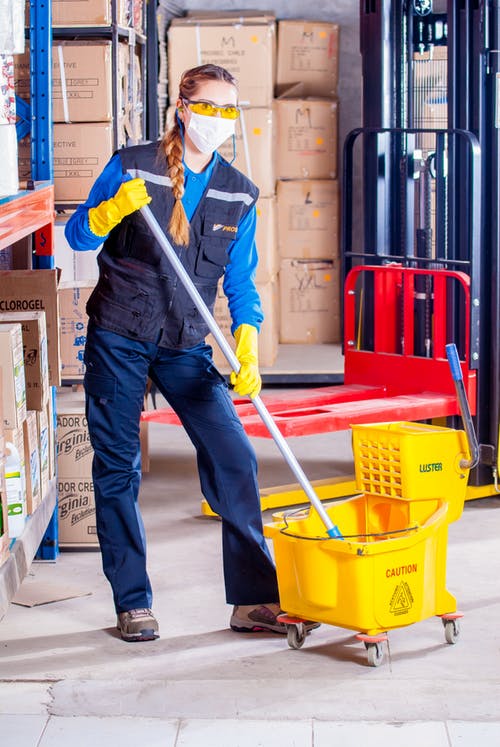
Spring Cleaning and Safety
No time is more appropriate than spring to pull out all the stops and reach into the less frequented corners of your facility to eliminate dust and grime. This is also a great opportunity to assess your current safety situation and remove hazards from your workplace.
Here are some aspects you should consider when mapping out your spring cleaning strategy.
Workplace Clutter:
Whether it is an office desk or a warehouse floor, having a cluttered work area makes it increasingly difficult to locate items. In addition, clutter can heighten the risk of slips and falls as well fire accidents. To curb these hazards, execute a major purge and discard any unnecessary items. Remove anything blocking exits to eliminate tripping hazards. Check all perishable items and properly dispose of any out-of-date materials.
Chemical Safety:
Improper use of chemicals can lead to hazardous skin exposures, inhalation of toxic fumes, and initiate fires at the workplace. When working with or organizing hazardous substances, avoid placing them in direct sunlight or near any heat sources.
Refer to the appropriate safety data sheets for proper storage techniques so everything remains safe during your spring cleaning.
Perform Safety Checks:
While cleaning and decluttering, incorporate safety inspections and/or maintenance checks throughout the entire workplace including: all equipment, tools, machinery and Personal Protective Equipment (PPE). Identifying the need for repairs, replacements, service and/or maintenance can address potential issues before they become problems.
Ensuring First Aid kits and stations are replenished and appropriately stocked is an essential part of an effective health and safety management program. Accidents and injuries aren’t expected but properly equipped first aid resources should be.
Review Company Policies & Procedures:
After the workplace is clean, tidy and safety checks have been completed, it’s a good time to have all staff get reacquainted with important company practices including:
- Safety standards
- Fire drills
- Accident/incident reporting
- Near-miss reporting
- Drug and alcohol guidelines
Besides addressing complacency and reinforcing compliance, it’s a great way to identify areas where training, retraining and renewals may be required. Spending a little extra time spring cleaning now can help prevent Workers’ Compensation claims and costs in the future.
